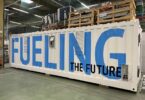Both Google and Open AI launched new enterprise Generative AI products this week and Walmart announced a program that will give its roughly 50,000 non-store employees access to a generative AI app trained on corporate information, an indication of how quickly the new technology is being embraced by business. Walmart’s generative AI feature is part of the company’s broader “Me@Campus” app for employees and will work on both computers and smartphones.
“The significance of this launch goes above and beyond the basic benefits of GenAI, like productivity gains,” Donna Morris, Walmart’s Chief People Officer and Cheryl Ainoa, EVP, New business and Emerging Technology, wrote in a co-authored LinkedIn blog post “ We believe the key to unlocking transformation lies in the creativity and innovation of our associates. Ideally, this technology will free them from monotonous, repetitive tasks, allowing more time and focus for improving the customer/member experience. Just picture the scale of what we can accomplish by putting a simple, easy-to-use GenAI tool in the hands of tens of thousands of associates, versus limiting the use of GenAI to just a few. “
About 75% of the value that generative AI use cases could deliver falls across four areas: Customer operations, marketing and sales, software engineering, and R&D, according to a June McKinsey Digital report. Across 16 business functions, McKinsey examined 63 use cases in which the technology can address specific business challenges in ways that produce one or more measurable outcomes. Examples include generative AI’s ability to support interactions with customers, generate creative content for marketing and sales, and draft computer code based on natural-language prompts, among many other tasks.
McKinsey is projecting that generative AI will have a significant impact across all industry sectors. Banking, high tech, and life sciences are among the industries that could see the biggest impact as a percentage of their revenues from generative AI. Across the banking industry, for example, the technology could deliver value equal to an additional $200 billion to $340 billion annually if the use cases were fully implemented.
The financial benefits that AI/machine learning and generative AI could generate by the end of this decade for the top 212 North American public retail and restaurant companies could equal $1.5 trillion, with Walmart and Amazon alone accounting for $580 billion, or 38.5% of the total, according to a new study by the IHL Group, a global research and advisory firm for the retail and hospitality industries. The group’s Retail AI Readiness Index provides an AI readiness score comparison along with financial impact projections for individual companies, in areas including sales growth, gross margin improvement and sales/general administrative cost improvements.
It is no surprise, then, that 64% of CEOs across all industries say they face significant pressure from investors, creditors, and lenders to accelerate adoption of generative AI, according to a May study conducted by the IBM Institute for Business Value, in partnership with Oxford Economics, which surveyed almost 400 executives across the United States, Australia, Germany, India, Singapore, and the UK. Over over half say their employees are pushing for faster adoption. Consequently, investment in generative AI is expected to grow 4x over the next two to three years—although it remains, at least for now, a fraction of total AI spend, according to the study.
Trust is holding organizations back from doing more with generative AI, according to the IBM study. Four in five executives see at least one trust-related issue as a roadblock to generative AI adoption. Cybersecurity, data privacy, and accuracy top the list, and they also have broader concerns about explainability, ethics, and bias in both data sources and the responses that models deliver.
The flurry of announcements by Google this week is part of the tech giant’s recent effort to showcase its AI plans, after Microsoft caught the company off guard with an ambitious AI strategy it has been rolling out since last year. But its big business customers need to be deliberate and move at a different pace, Google Cloud chief Thomas Kurian said in an interview with Reuters.”We’ve generally told enterprise customers, ‘Go slowly and methodically because it’s important that you treat this as a strategic software development,'” he said. “There’s been this sort of FOMO of, ‘I need to be in generative AI for generative AI’s sake.'”
IN OTHER NEWS THIS SUMMER:
CYBERSECURITY
Japan’s Cyber Security Agency Victim of Months Long Breach
The Financial Times reported August 29 that the organization responsible for Japan’s national defences against cyber attacks has itself been infiltrated by hackers, who may have gained access to sensitive data for as much as nine months. According to three government and private sector sources familiar with the situation, the FT said Chinese state-backed hackers were believed to be behind the attack on Japan’s National Center of Incident Readiness and Strategy for Cybersecurity (NISC), which began last autumn and was not detected until June. The discovery of the incident and the sensitivity of the target comes at a time of unprecedented scrutiny of Japan’s vulnerability to cyber attack. Tokyo is embarking on deeper military co-operation with the US and regional allies, including work on a joint fighter project with the UK and Italy, in which top secret technological data will be exchanged. Government cyber security experts in both the US and UK have expressed strong reservations about Japan’s ability to safely handle data.
British Officials Say AI Chatbots Could Carry Cyber Risks
British officials are warning organizations about integrating artificial intelligence-driven chatbots into their businesses, saying that research has increasingly shown that they can be tricked into performing harmful tasks. In a pair of blog posts published Wednesday, Britain’s National Cyber Security Centre (NCSC) said that experts had not yet got to grips with the potential security problems tied to algorithms that can generate human-sounding interactions – dubbed large language models, or LLMs.
SEC Adopts Rules on Cybersecurity Risk Management, Strategy, Governance, and Incident Disclosure by Public Companies
The U.S. Securities and Exchange Commission adopted rules requiring registrants to disclose material cybersecurity incidents they experience and to disclose on an annual basis material information regarding their cybersecurity risk management, strategy, and governance. The Commission also adopted rules requiring foreign private issuers to make comparable disclosures
ENERGY
European Fusion Companies Announce Partnerships And Funding News
On August 6 German laser fusion developer Marvel Fusion and the USA’s Colorado State University (CSU) announced a a public-private partnership for the construction of a $150 million high-power laser and fusion research facility on the CSU Foothills Campus. Targeted for completion in 2026, the project is expected to feature at least three laser systems, each with a multi-petawatt peak power and an ultra-fast repetition rate of ten flashes per second. “Such a combination of lasers will make the facility unique in the world, and it would be designed to accommodate expansion and additional lasers in the future,” Marvel Fuion said. When completed, the state-of-the-art facility will serve as a platform to advance the company’s laser-driven fusion approach.
Meanwhile, on August 29 Novatron Fusion Group, a Swedish fusion company, announced the successful closure of a €5 million seed round. The round was led by Climentum Capital, in syndication with Industrifonden, Santander InnoEnergy Climate Fund, and with renewed investments by KTH Holding and EIT InnoEnergy. If validated Novatron’s invention promises to simplify fusion power engineering and reduce the capital cost of fusion reactors to half of that of current solutions in experimental development such as the Tokamak and ITER technology that scientists from 35 nations have been working on since the 1990s. Novatron is now building a new test facility at KTH, a public research university in Stockholm that aims – within a year – to validate its approach to plasma confinement and conduct further fusion research. The vision is to have a commercial fusion design in the final stage that enables net-power to the energy grid before 2040. (For more on Novatron see The Innovator’s story)
FOOD
Strategic Partnership Between Two European Upstarts Aims To Develop Innovative Products From Surplus Food
Spain’s Blendhub is incorporating UpFood announced a new strategic partner to its global Food-as-a-Service platform, which focuses on supporting start-ups, SMEs and large ingredients and food industries, from ideation to market launch of food products. Upfood, a Danish company led by entrepreneur Sajjad Haider, specializes in upcycling surplus fruit and vegetables into nutritious plant-based ingredients for the food industry. UpFood has developed a novel (patent pending) fruit and vegetable dryer that is solar powered and promises a very low production cost. The standard model has the capacity to dry 1Mt per day of fresh fruits and vegetables.The dryer capacity can be scaled and customized to a capacity from 50 kg/day suitable for small-holder farmers to 10MT per day for industrial production. This dryer can be deployed at post-harvest level and also in any production plant as a drying unit prior to the processing into powder.
ARTIFICIAL INTELLIGENCE
Germany Plans To Double AI Funding In Race With China, U.S.
Germany plans to almost double its public funding for artificial intelligence research to nearly a billion euros over the next two years, as it attempts to close a skills gap with sector leaders China and the United States.The target, announced by research minister Bettina Stark-Watzinger on August 23, is modest compared with the $3.3 billion that the U.S. government spent on AI research in 2022 according to a Stanford University report.
To read more of The Innovator’s News In Context articles click here.






